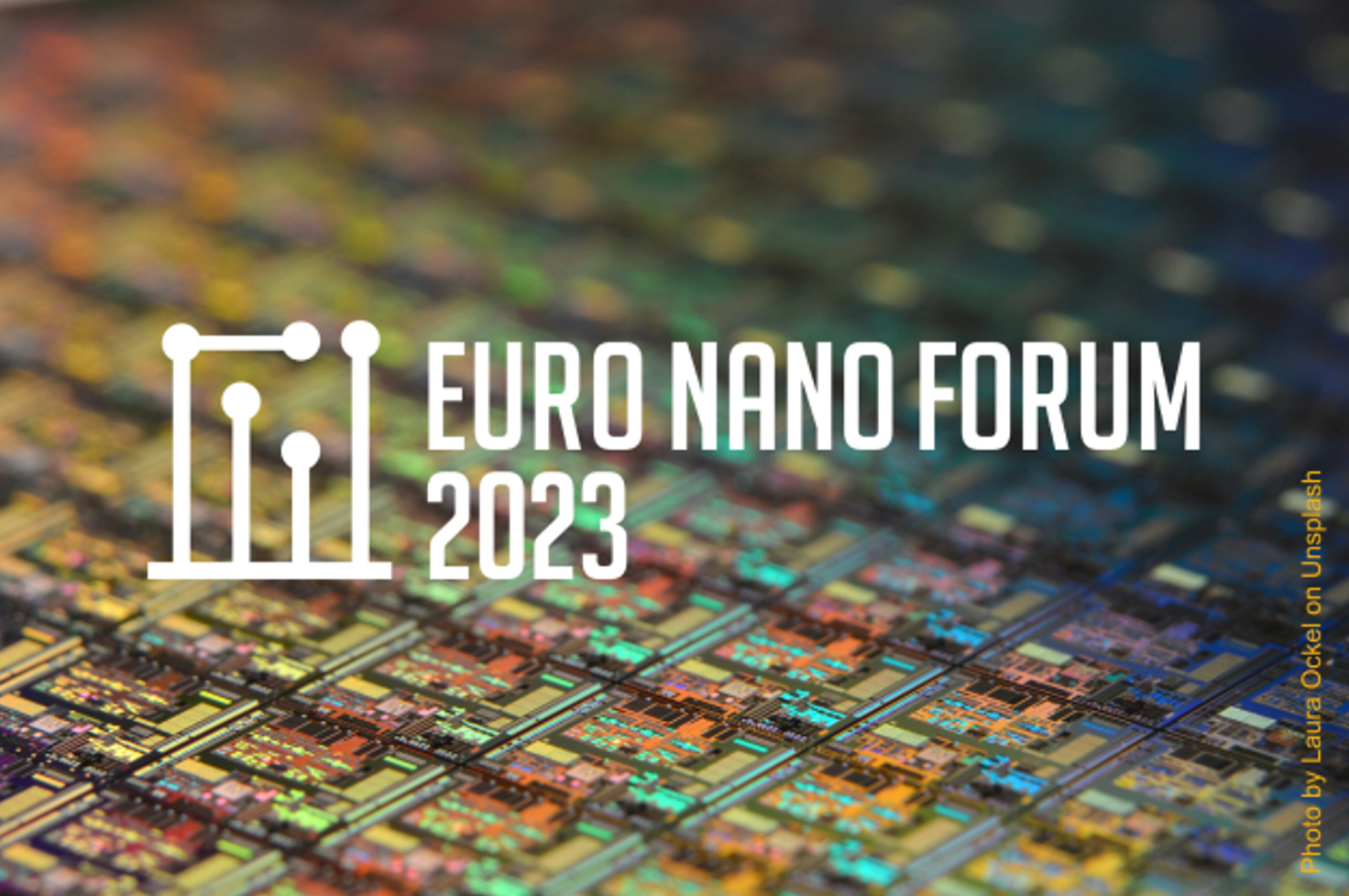- Event Report
HBP represented at the EuroNanoForum 2023 in Sweden
13 June 2023
The Human Brain Project (HBP) is present at the EuroNanoForum 2023, which is being held in Lund (Sweden), from June 11th to 13th during the Swedish presidency of the council of the European Union. The session organised by the HBP presented four talks focusing on advances from brain- and technology research that address major societal issues.
The EuroNanoForum is a conference held every other year in the country presently holding the EU presidency, bringing together academia, industry, policy makers and other stakeholders to discuss developments on nanotechnologies in an open forum. This year, it focuses on identifying policy options and priorities, and on planning future actions regarding European activities in nanoscience and nanotechnology. Advanced materials, innovation, sustainability, circular economy, and fossil-free energy are also being discussed.

With the parallel session “Bridging scales in life science and enabling neurotechnologies”, the HBP focused on two research areas which connect to the nanoscale: advanced materials and their current and future role in Neuroprosthetics; and the bridging of scales in life science through computational modeling.
During the session, chaired by Ausra Saudargiene (Lithuanian University of Health Sciences), HBP researchers and guests presented results in the topics Neurotech and Atomistic and molecular dynamics in the brain that spell opportunities for innovative industry and clinical developments.

In the Neurotech part of the programme, Andreas Rowald (Friedrich-Alexander University Erlangen-Nürnberg) talked about “Precision Neurostimulation towards the Nanoscale: A Computational Perspective”. Neurostimulation is a promising technique for treating conditions such as Parkinson's disease or paralysis due to spinal cord injuries. He focused on the role of computational models and digital twins, which allow the digital simulation of the effects of neurostimulation before its use in a clinical setting.
One of the challenges of this technology is to provide the patients with good movement selectivity, and researchers are now looking at other disciplines, including nanomaterial enabled neurostimulation, to find better solutions. "We clearly need a new approach to solve the issue of selectivity", said Rowald.
Maria Asplund (IMEC / Chalmers University) presented a talk on “Engineering for biocompatibility and the vision of a seamless electrode-neuron interface”. Speaking about neural implants, she explained that the challenge is to find materials and structures that make implants that work well with living tissue - or more biocompatible.
Researchers have learned that it is important to make devices flexible and as small as possible. "The question is: how far can we go?", asks Asplund. When electrodes and connections become smaller, they gain biocompatibility but lose functionality. "It is important to find a good trade-off, and that's where I think nanotechnology can really help us".
In the second part of the session, HBP researcher Adam Hospital (IRB Barcelona) gave a talk on “Biomolecular simulations and macromolecular flexibility databases in the EBRAINS research infrastructure: exploring the dynamics of central nervous system molecules”.
"This is a good opportunity for you to see how broad is the research we are doing in this big project that is the HBP", said Hospital to the EuroNanoForum audience. He and his group study the dynamics and flexibility of molecules that are responsible for synapses, transferring information from one neuron to another. For that, they use computational techniques that allow simulations in different resolutions, starting from the atomistic scale.
Hospital presented three databases and one workflow for molecular dynamics simulations that were integrated by his team into the EBRAINS research infrastructure: Central Nervous System ligands, a database of bioactive conformers of ligands binding to neuronal proteins; MoDEL-CNS, a database of atomistic-MD trajectories for relevant signal transduction proteins; BioExcel-CV19, a database of atomistic-MD trajectories for relevant COVID-19 related proteins; and BioExcel Building Blocks, a workflow for setting up and running molecular dynamics simulation.
All of these tools are freely available for the scientific community on the EBRAINS platform.
With the talk “In silico design of novel NLRP3 allosteric inhibitors to fight neuroinflammation and neurodegeneration”, Francesca Spyrakis (University of Turin) presented research that is part of the HBP-funded project BRAVE: “Protecting the brain from COVID-19-mediated neurodegeneration through inflammasome inhibition”.
“We decided to select this target, called NLRP3, which is the main protein effector involved in the mechanisms leading to neurodegeneration. The aim is to develop new drugs and to better investigate the chemical space available, in order to target the inflammasome, blocking its activation, to prevent inflammation”, explains Spyrakis.
This project is still ongoing and is conducted in collaboration between the University of Turin, University of Pavia, Heidelberg Institute for Theoretical Studies (HITS), and the Forschungszentrum Jülich Supercomputing Centre (JSC).



